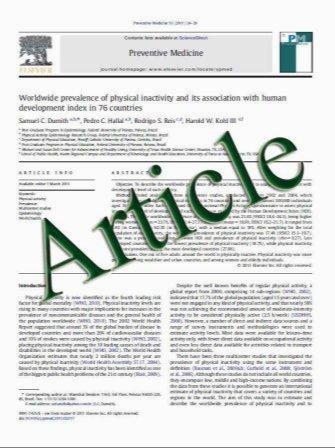Retinal functional changes measured by frequency-doubling technology in patients treated with hydroxychloroquine
- نوع فایل : کتاب
- زبان : انگلیسی
- مؤلف : Lucia Tanga & Marco Centofanti & Francesco Oddone & Mariacristina Parravano & Vincenzo Parisi & Lucia Ziccardi & Barbara Kroegler & Roberto Perricone
- چاپ و سال / کشور: 2011
Description
Background Antimalarial drugs such as chloroquine (CQ) and hydroxychloroquine (HCQ) are mainly used in the treatment of rheumatologic diseases, and their use may be associated with irreversible retinal toxicity. Previous studies indicate early paracentral visual field loss (Humphrey 10-2) in patients taking HCQ". These paracentral defects appear before changes in other clinical parameters as visual acuity and fundoscopy. The mechanism of CQ toxicity remains unclear. It was reported that toxic doses of CQ administered for as long as 4.5 years to Rhesus monkeys caused an initial dramatic effect on ganglion cells, followed later by photoreceptors and RPE degeneration. The purpose of this study is to explore early retinal functional changes measured by frequency-doubling technology (FDT) in patients treated with hydroxychloroquine (HCQ). Methods Forty-eight eyes of 48 subjects treated with hydroxychloroquine (HCQ), with no signs of retinal toxicity, and 36 eyes of 36 age and sex-matched healthy subjects were enrolled in this cross-sectional, prospective, observational, case control study. Functional testing included frequency-doubling Humphrey-matrix perimetry (FDP), white-on-white Humphrey visual field perimetry (HFA), using the 24-2 and 10-2 threshold programs, multifocal electroretinogram (mfERG, Veris 4.9) and low contrast sensitivity (CS) measurement. Results FDP mean deviation (MD) was found to be significantly reduced in HCQ-treated patients compared to controls both in the 24-2 (-1.38±2.41 dB vs 0.21±1.83dB, p<0.01) and in the 10-2 program (-0.97 ±2.88 dB vs 0.15± 1.72dB, p<0.01). FDP pattern standard deviation (PSD) was found to be significantly worse in HCQ-treated patients compared to controls both in the 24-2 (2.70±0.65 dB vs 2.41±0.31 dB, p<0.01 and in the 10-2 program (2.86± 0.48 dB vs 2.48 ±0.39 dB, p<0.01). HFA PSD and CS was also significantly reduced in HCQ patients, while response amplitude densities (RAD) were similar between patients and controls. A statistically significant difference in the ratio of the 5°–10° RAD and the 0°–2.5° RAD (0.31±0.08 vs 0.36±0.07 respectively, p<0.05) was found between groups. Conclusion Frequency doubling perimetry could be useful to detect early retinal impairment in patients treated with hydroxychloroquine.
Graefes Arch Clin Exp Ophthalmol (2011) 249:715–721 DOI 10.1007/s00417-010-1612-6 Received: 1 September 2010 / Revised: 20 December 2010 / Accepted: 29 December 2010 / Published online: 21 January 2011


